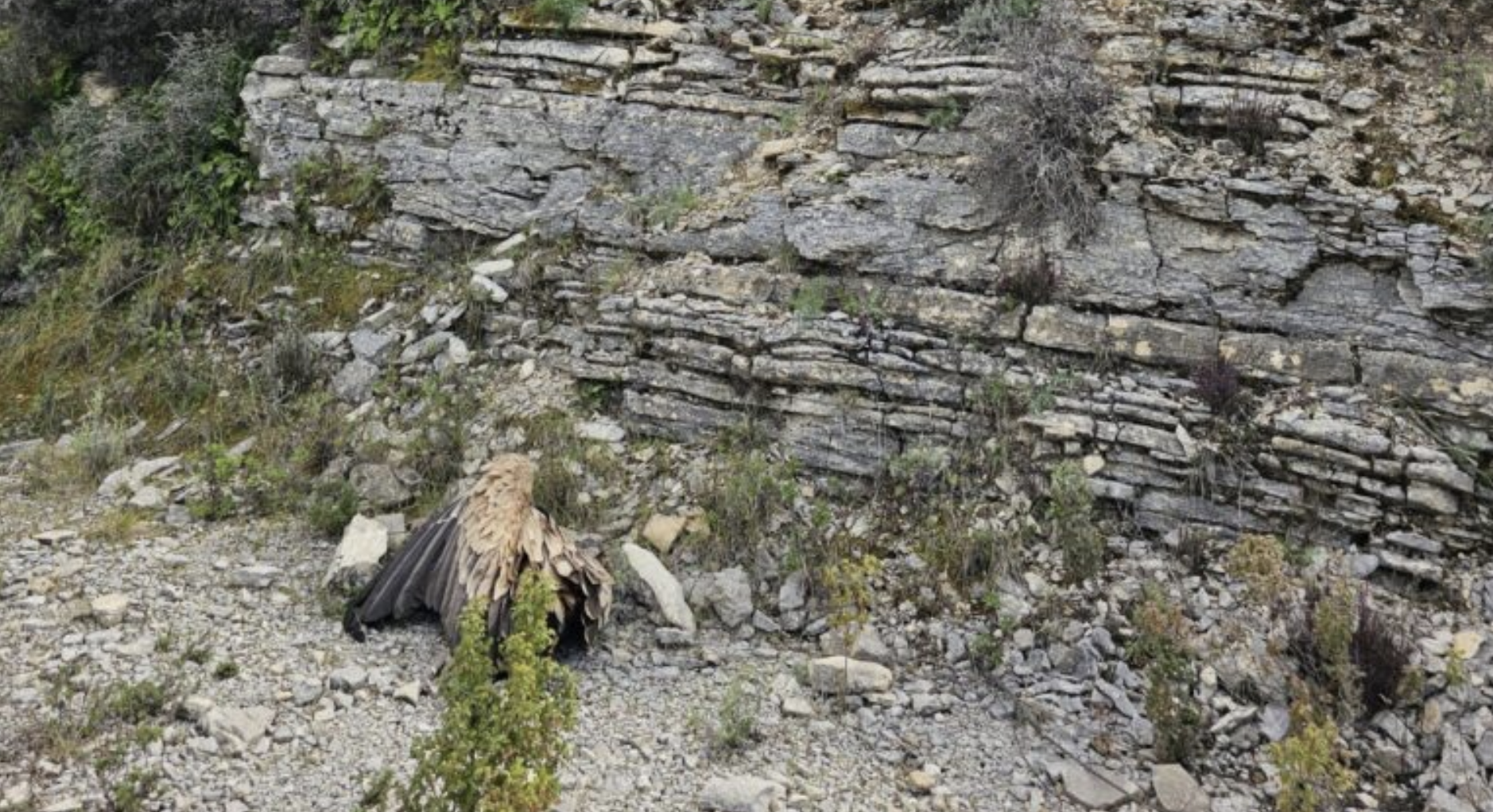
Back in November we reported on the epic travels of two young Griffon Vultures, Kaya and Arda, who were fitted with GPS transmitters as part of the LIFE Re-Vultures project in the summer 2018. These two adventerous birds travelled from the Eastern Rhodope Mountains in Bulgaria all the way to Saudi Arabia. So what have they been up to since November?
Feeding with foxes
For several months since Arda continued south Kaya crossed between Israel and Syria and shortly after appearing in Israel ornithologists in the Negev desert, captured Kaya and took samples of their blood and took measurements such as weight and found the young bird in good health. At the beginning of 2019 Kaya was spotted again this time on a camera trap set up by the team at the Ein Gedi Nature Reserve and caught them sharing a with fox.
Following Griffon Vultures
Not traditionally a migratory species, Griffon Vultures tend to wander extensively over long distances alone or in small groups in their first few years after fledging from the nest exploring new areas away from their breeding grounds. After a few years they usually return to their native colonies, but this is risky behaviour with 70 percent mortality rate during this period.
Fitting birds with GPS transmitters, small devices that are solar powered and weigh around 30-40g, help conservationists better understand their movements and any threats they may encounter. Both Kaya and Arda were fitted with GPS transmitters which send their locations over the mobile communications network allowing our LIFE Re-Vultures colleagues to monitor them from Bulgaria.
“If there is no signal from a bird or unusual behavior, a field inspection is carried out by the team or foreign colleagues if the bird is located outside Bulgaria,” said Dobromir Dobrev from the Bulgarian Society for the Protection of Birds,
Since November Kaya has repeatedly visited protected areas, including the nature reserve Ein Gedi, the largest oasis in Israel around 50km southeast of Jerusalem.
Meanwhile Arda, who was fitted with a transmitter back in 2016, has remained in Saudi Arabia since reaching there back in November. It is the third winter Arda has spent in Saudi Arabia, in the summer they returned north, not quite back to the Eastern Rhodope Mountains but northeast Turkey near the border with Georgia and Armenia.

LIFE RE-Vultures
Starting in 2016, the five-year LIFE RE-Vultures project was developed by Rewilding Europe, in collaboration with the Rewilding Rhodopes Foundation the Bulgarian Society for the Protection of Birds, WWF Greece, the Hellenic Ornithological Society and us here at the Vulture Conservation Foundation. The aim of the project is to support the recovery and further expansion of the populations of Cinereous and Griffon Vultures in the cross-border region of the Rhodope Mountain by improving natural prey availability, monitoring movements of birds to help understand the threats they face and carrying out activities that will reduce the mortality of the populations from threats such as illegal wildlife poisoning and collisions with electricity infrastructure.



